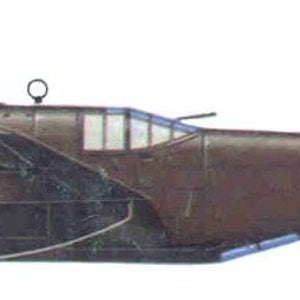Navigation
Install the app
How to install the app on iOS
Follow along with the video below to see how to install our site as a web app on your home screen.
Note: This feature may not be available in some browsers.
More options
You are using an out of date browser. It may not display this or other websites correctly.
You should upgrade or use an alternative browser.
You should upgrade or use an alternative browser.
The Mitsubishi Ki-46, first flight in September 1939, was a twin-engine reconnaissance aircraft used by the Imperial Japanese Army in World War II. Its Army Shiki designation was Type 100 Command Reconnaissance Aircraft; the Allied nickname was "Dinah".
In 1944-45, during the last days of the war, it was modified as a high-altitude interceptor, with two 20 mm cannons in the nose and one 37 mm (1.46 in) cannon in an "upwards-and-forwards" position - almost like the Luftwaffe's Schräge Musik night fighter cannon emplacements - for fighting USAAF B-29 Superfortresses over the metropolitan Japanese islands. It lacked stability for sustained shooting of the 37 mm (1.46 in) weapon, had only a thin layer of armour plating, lacked self-sealing fuel tanks, and was slow to climb.
Info: Wikipedia
http://en.wikipedia.org/wiki/Mitsubishi_Ki-46
Profile: Fighting Aircraft of World War II
Published by Salamander Books.
In 1944-45, during the last days of the war, it was modified as a high-altitude interceptor, with two 20 mm cannons in the nose and one 37 mm (1.46 in) cannon in an "upwards-and-forwards" position - almost like the Luftwaffe's Schräge Musik night fighter cannon emplacements - for fighting USAAF B-29 Superfortresses over the metropolitan Japanese islands. It lacked stability for sustained shooting of the 37 mm (1.46 in) weapon, had only a thin layer of armour plating, lacked self-sealing fuel tanks, and was slow to climb.
Info: Wikipedia
http://en.wikipedia.org/wiki/Mitsubishi_Ki-46
Profile: Fighting Aircraft of World War II
Published by Salamander Books.








